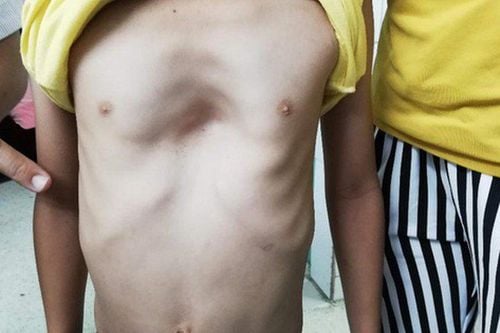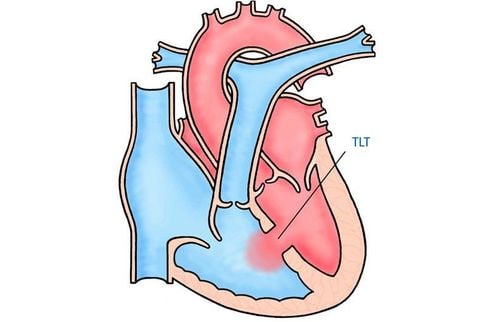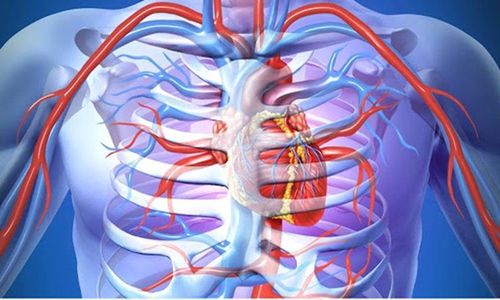This is an automatically translated article.
The article was professionally consulted by Specialist Doctor II Tran Van Trong - Specialist in Pediatric Surgery, Plastic Surgery - Aesthetics - Department of General Surgery - Vinmec Danang International Hospital.Chest cavity is a congenital deformity of the chest wall caused by an abnormality in the growth of the cartilage connecting the ribs to the sternum. This causes the sternum to sag and the shape of the concave to resemble a funnel. This malformation is common in boys and the disease worsens with the growth of the child, especially when the child is in puberty.
1. Symptoms of congenital chest depression
Chest cavity (English name is Pectus excavatum), also known as funnel chest, is a condition in which the breastbone and some ribs are abnormally deformed and deeply concave. Chest dimples in infants can be difficult to detect, with the symptoms starting to become apparent by the time the child is 2 to 3 years old. In some cases, new chest depressions appear as the child gets older.The severity of chest depression ranges from mild to severe, but it tends to become more and more severe as the child grows. Many babies are born with thoracic concavity and do not need treatment, because the thoracic concave is very mild, but in more severe cases, this thoracic cavity can press on the heart and lungs. However, the effect on the heart and lungs is usually negligible and only occurs with intense exercise. In addition, about 15% of children with congenital thoracic insufficiency will develop scoliosis.
For mild cases, parents may not see any suspicious signs, but in severe cases, the chest cavity will press on the lungs and heart, causing:
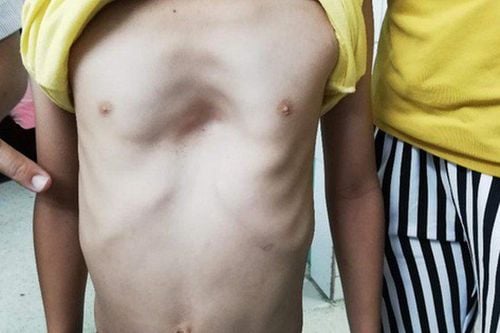
Hình ảnh lõm ngực bẩm sinh
Marfan syndrome: This is a disorder that affects the body's connective tissue Poland syndrome: A rare birth defect that is characterized by missing or underdeveloped muscles on one side of the body, especially underdevelopment or complete absence of one pectoral muscle. Rickets: This is a disorder caused by a lack of vitamin D, calcium or phosphate, leading to soft and weak bones in children Scoliosis
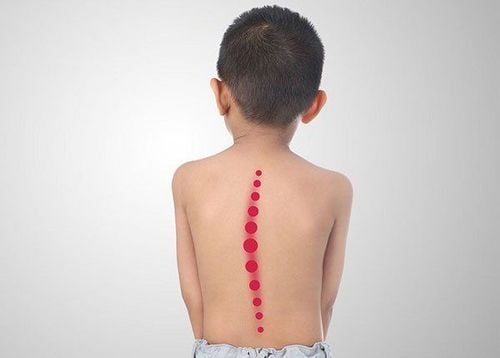
Trẻ bị vẹo cột sống
2. Complications of chest depression
Severe cases of chest depression can compress the heart and lungs or push the heart to the side. Even mild cases can lead to psychological problems in children with low self-esteem about their appearance.Heart and lung problems A deep chest cavity reduces the amount of air that the lungs expand to take in, resulting in a decrease in the amount of air the child can take in. In addition, this indentation also presses on the heart, causing the heart to be pushed to the left and reducing its ability to contract effectively.
Appearance problems Children with concave breasts tend to bend forward, so they are so self-conscious about their appearance that they avoid activities with family or friends such as swimming, because the dent in the chest is difficult to disguise. More pages with clothes.
Dr. Trong has over 10 years of experience in Pediatric Surgery and Plastic Surgery - Aesthetic, and soon became one of the leading doctors in the field of Children's Surgery, especially Laparoscopic Surgery. and Plastic Surgery - Aesthetic.
To register for examination and treatment at Vinmec International General Hospital, you can contact Vinmec Health System nationwide, or register online HERE.
References: kidshealth.org, mayoclinic.org
MORE
Recommended video:
Fetal screening - A healthy baby is born
MORE
Newborn screening tests should be done soon after birth Middle chest pain: What you need to know Chest concave during breathing in children





